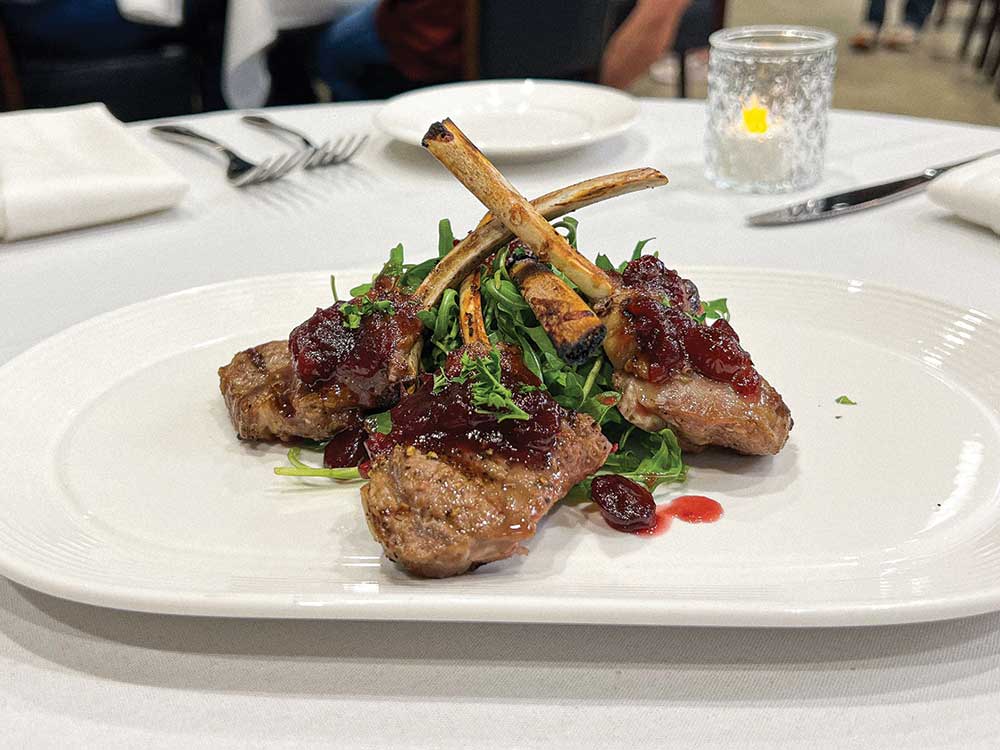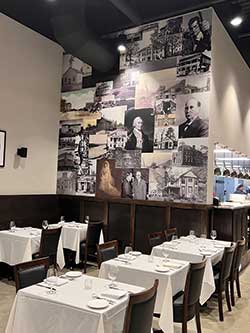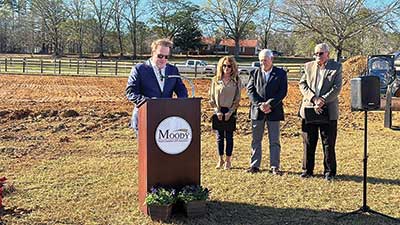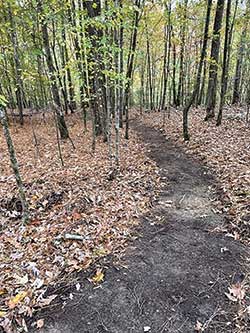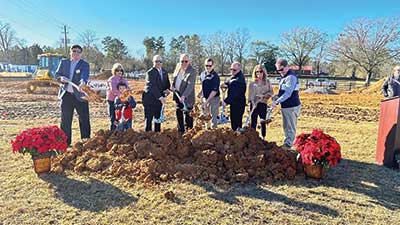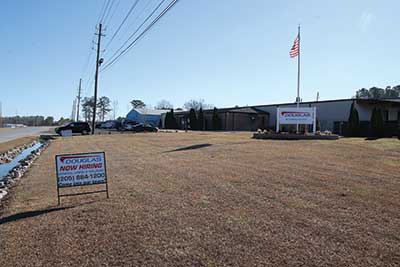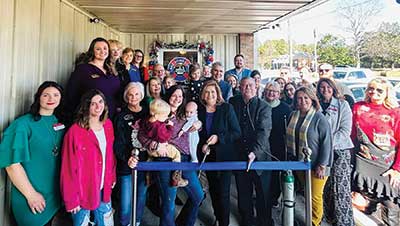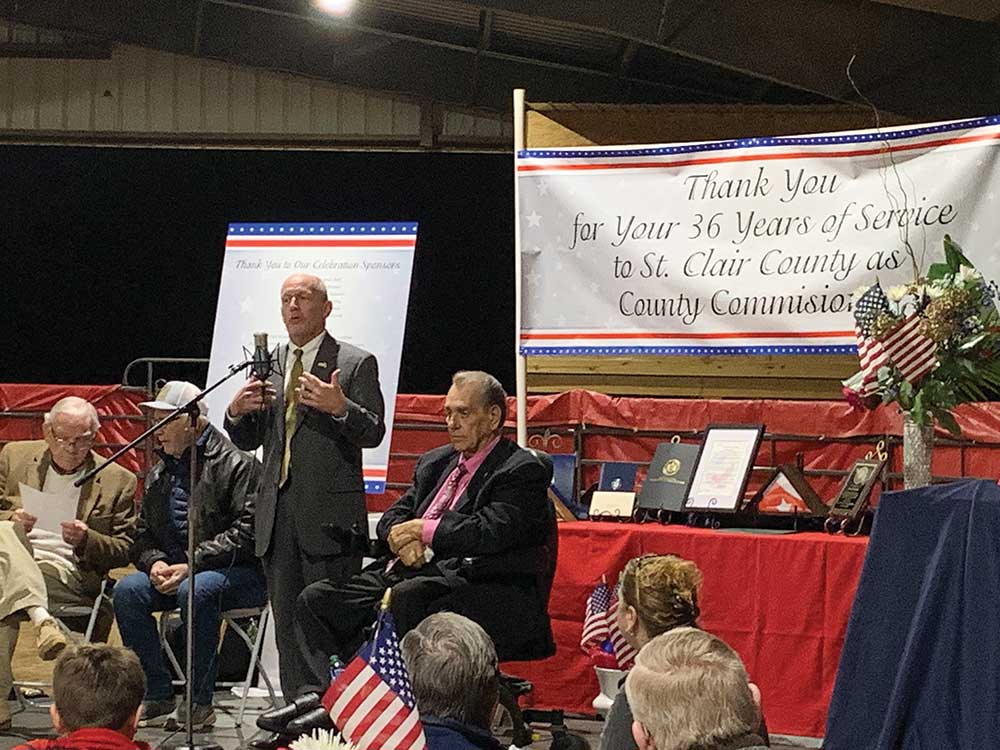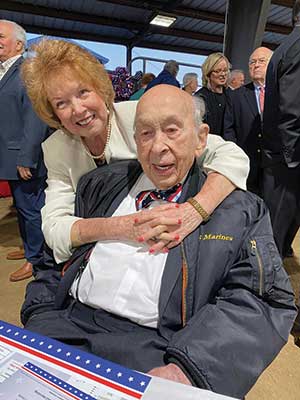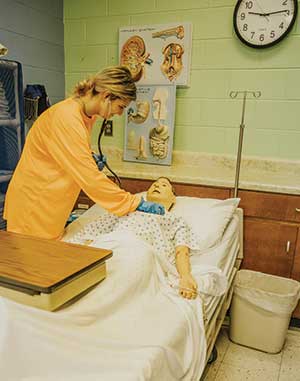Sizzling success stories
Story by Paul South
Submitted Photos
Since January, Pell City’s hottest new restaurant and bar – The St. Clair and The Tavern at The St. Clair, have sizzled and sauteed, shaken and stirred their way to a mouth-watering recipe for success.
Weekends are packed with patrons dressed to the nines in The St. Clair, and in jeans and boots at the Tavern. The décor is white tablecloth elegant, yet welcoming, with decor celebrating the rich history of the area.
The restaurant and tavern are the brainchild of Rebecca and Carson Robinson, business partners for nearly two decades. The Pell City venture is their third venture together.
Rebecca Robinson moved to Pell City 11 years ago, loving it so much she never left. The St. Clair and the Tavern blossomed from the growth and change she saw in the community. As more and more people from Birmingham, Atlanta and other areas discovered Pell City, culinary expectations climbed.
“I, myself, being from Birmingham, it’s really nice and convenient when you have a place close by where you can go get a nice glass of wine, a great steak, where you have good seafood choices,” she says. “And we really didn’t have here in Pell City – while we have a lot of good locally-owned restaurants – we did not have really any that hit that higher-end mark.”
The COVID-19 pandemic also brought a steady stream of more full-time residents to Pell City and Logan Martin Lake, migration sparked by a now-remote workforce.
“It was just the right time to open up a fine dining restaurant with an attached tavern, Robinson says. “It was just the right time for the market.”
The menu, crafted by Robinson, Executive Chef J.R. Dell and his team is a mix of steaks, seafood, game, chicken, lamb and pork and a variety of appetizers and salad.
Offerings are upscale, but not pretentious.
“That was our goal for Pell City, to offer a higher end option, but still be casual enough to meld into the Pell City way of life. A lot of people live here because they like the more relaxed lifestyle,” Robinson says. “That was our vision for the restaurant: to provide the great food, the quality food, the great service, but not to overdo it.
“In other words, you can come in in jeans and eat Ahi tuna or a wagyu steak,” Robinson says. “That was our goal.”
Dell leads a team of five chefs. He’s a magna cum laude graduate of the prestigious Johnson and Wales University culinary school. He trained in the United States and in Europe under Peter Jackson, founder of the Welsh Culinary Olympics team. The menu has a mix of Europe, the Florida Keys and local influence.
Along with top-flight food and service, the restaurant and companion tavern pay homage to a history of St. Clair County and its namesake, Gen. Arthur St. Clair, who served in the French and Indian War and in the American Revolution. St. Clair’s portrait adorns the restaurant/tavern’s website, and the walls are filled with photos, like the black and white image of Logan Martin Dam, which transformed the area in the early 1960s, and other prominent St. Clair historic figures and places.
“We wanted people to know we were local,” Robinson says of the photos featuring prominent locals.
“We felt like the St. Clair was a good venue to bring back and to remember some of the great history of the county,” Robinson says.
Since opening earlier this year, The St. Clair and the Tavern at St. Clair have created a stir, drawing diners from west Georgia and across central Alabama, as well as locals.
“I have to say, we’re humbled by the reception that we’ve received, not just locally, but from miles and miles away.”
But the strong showing of the restaurant and tavern’s early days were not unexpected.
“We felt like there were a lot of people just like us in these communities that wanted and were asking for a restaurant of this quality and food of this caliber,” Robinson says. “So no, we weren’t really surprised by the buzz. We’re glad that people appreciate what we’ve been working towards.”
Robinson credits her team for the success of The St. Clair and the Tavern. Many restaurants across the country have thrown in the napkin so to speak, closing because of the inability to secure and keep staff. Many have worked with the Robinsons in past ventures.
“We’ve been very fortunate to have such strong staff join us throughout this process … One of the things we like to do is we like to develop long-term relationships with the people that work with us. They’re not people who work for us. They work with us. We’re a team.”
Robinson adds,” We look at business as long term, 20-plus years. And we take care of the people that helped us make that happen.”
While Robinson and Dell created the current menu. The future menu will be created by the entire kitchen staff. Likewise, the bar staff will create the cocktail menu. On March 5, the restaurant launched a weekend brunch. For the staff, it’s not only about a paycheck, but the ability to create, Robinson says.
“I see the smiles on their faces when the customers love what they’ve done.”
The new menu, set to be rolled out in April, is like a state secret. Asked for a sneak peek, Robinson says, “I will not divulge.”
Robinson is a self-described “foodie of sorts,” and the initial menu reflects many of her likes. It took a year to develop the wine list.
“I love good Ahi tuna. I love good Wagyu beef, American Wagyu beef,” Robinson says. And while it’s hard to pick her absolute favorite on the menu, she has a standout.
“My standout is the Ahi tuna,” she says. “I absolutely adore it. We sell Triple A Saku. It is the best you can get. We serve it with Ponzu sauce, an Asian dipping sauce that’s a mix of salty and sweet.”
Wine tastings and pairing dinners and holiday events will come down the road, Robison says.
“We’re so busy, I’m not sure what day we would do it on right now.”
Reservations on the restaurant side are recommended through Resy.com, especially on the weekends. Walk-ins are welcome in the Tavern at the St. Clair. For more information, visit thestclairpellcity.com. The restaurant and tavern are located at 2413 Dr. John Haynes Drive in Pell City.
“Pell City is growing, and Pell City is changing,” Robinson says. “Don’t be afraid to come try us. Don’t be afraid to come try something new. Don’t think that you can’t come in in your blue jeans and have a nice dinner with a great glass of wine or a fabulous cocktail. Don’t be afraid to try us.”











